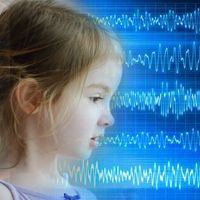Autism Spike Due Largely to Diagnosis Patterns, Not Increase in Prevalence
The rapid growth of autism diagnoses in the United States is mostly due to changes in diagnosis patterns, rather than a rapid increase in prevalence, according to a new study.

The rapid growth of autism diagnoses in the United States may not mean the condition is becoming more prevalent, according to a new study. Rather, the increase in autism rates appears to have more to do with changing diagnosis patterns.
Researchers at Penn State University looked at 11 years’ worth of data related to special education enrollment in the US. The data covered the years 2000 to 2010. During that time, autism diagnoses more than tripled, but the overall special education population remained flat. Researchers say that’s because the increase in autism diagnoses was largely offset by a similar decrease in the number of students diagnosed with other intellectual disabilities. Many of those other intellectual disabilities frequently occur alongside Autism Spectrum Disorder.
The results of the study were published this week in The American Journal of Medical Genetics.
In a Penn State press release, lead author Santhosh Girirajan, MBBS, PhD, said researchers have long struggled to sort out intellectual disorders that have a range of observable symptoms that occur in different combinations from patient to patient.
"The tricky part is how to deal with individuals who have multiple diagnoses because, the set of features that define autism is commonly found in individuals with other cognitive or neurological deficits," said Girirajan, an assistant professor of biochemistry and molecular biology and of anthropology and Penn State.
The federal government uses 13 different categories to classify special education students. Though many students may fit into multiple categories, the government requires students to be classified into a single category.
The researchers look at records for an average of 6.2 million students per year. Among 8-year-olds, the data showed that 59% of the increase in autism diagnoses could be traced to a reclassification of the student’s intellectual disorder. Among 15-year-olds, as much as 97% of the “new” autism cases were the result of reclassification.
Overall, according to the US Centers for Disease Control and Prevention, about 1 in 5,000 children were diagnosed with autism back in 1975. By 2002, that number had risen to 1 in 150. By 2012, 1 in 68 children were given an autism diagnosis.
Girirajan said his study suggests that public health researchers ought to do more nuanced analysis in order to determine actual changes in autism rates.
"Every patient is different and must be treated as such,” he said. “Standardized diagnostic measures incorporating detailed genetic analysis and periodic follow up should be taken into account in future studies of autism prevalence."